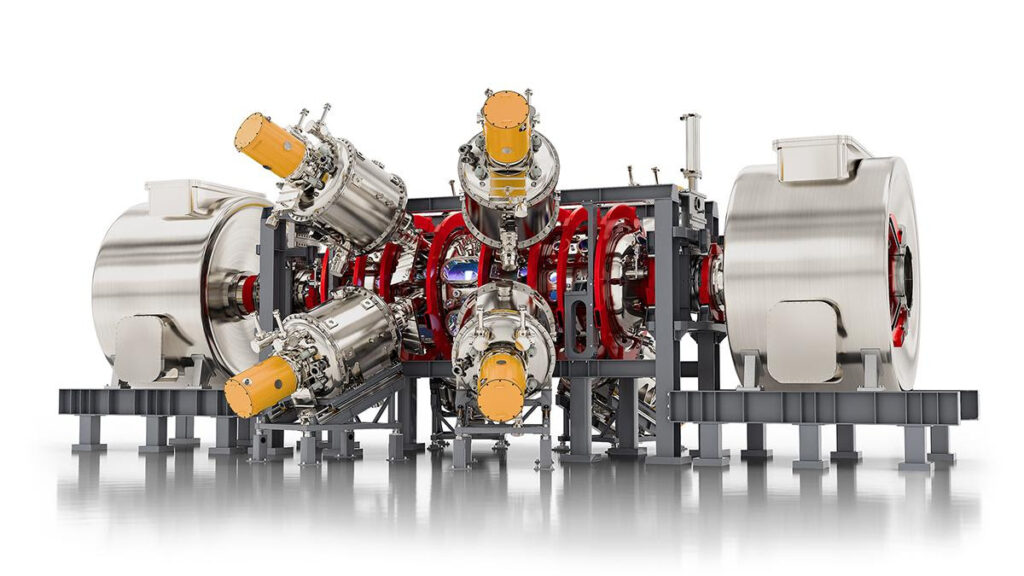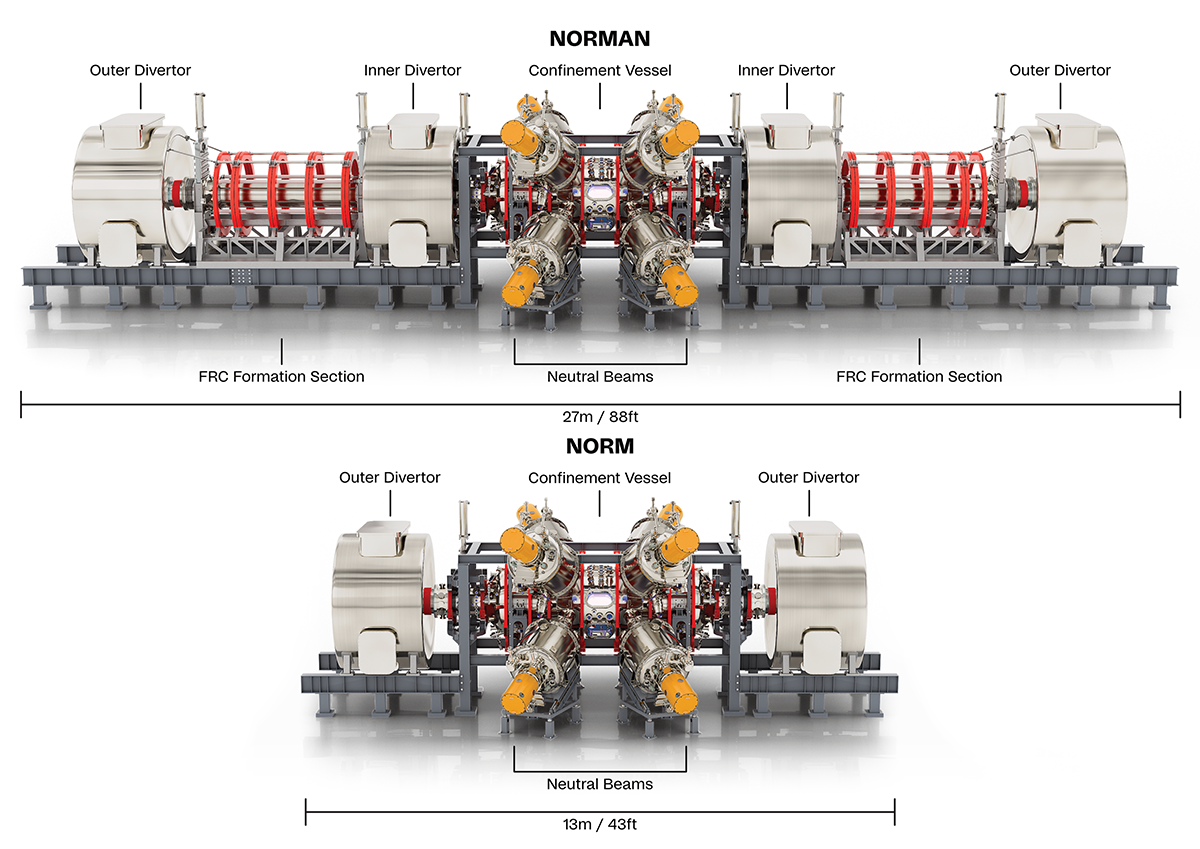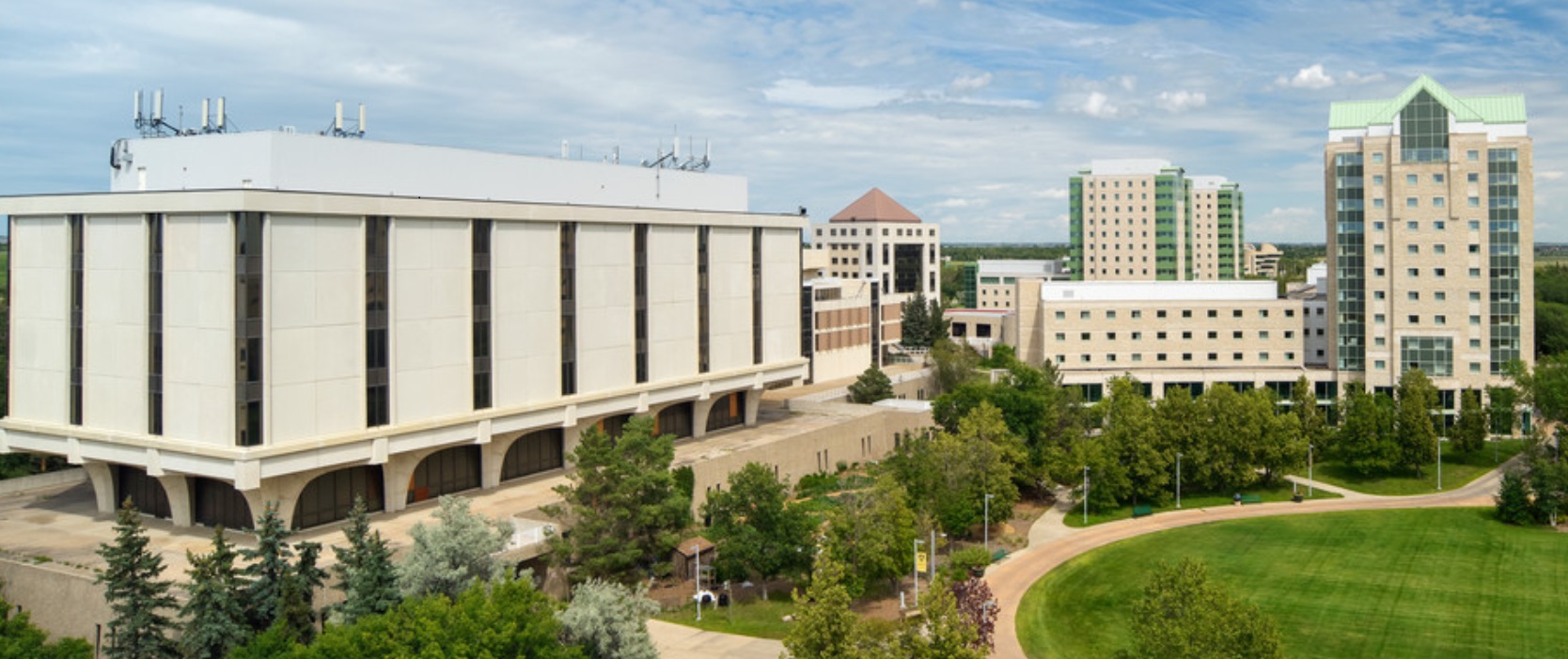Insider Brief
- Researchers at TAE Technologies have successfully demonstrated the formation and sustainment of a field-reversed configuration (FRC) using only neutral beam injection, advancing the practicality of compact fusion reactors.
- The experiment replaced traditional, complex startup methods with a steady-state approach, where high-energy beams alone generated the magnetic fields needed to confine plasma.
- Diagnostic analysis and modeling confirmed field reversal and plasma stability, marking a key step toward scalable and economically viable fusion power systems.
Say hello to Norm.
For decades, initiating and maintaining the high-energy plasma needed for fusion has required complex and often cumbersome systems — typically relying on short, high-power magnetic pulses or elaborate sequences involving plasma merging and acceleration. These methods added significant engineering overhead and limited the path toward a steady, practical fusion reactor.
Now, TAE Technologies, in a study published in Nature Communications, report on a new approach that represents a significant shift: for the first time, the company’s researchers have used only neutral beam injection — a continuous and scalable method — to both generate and sustain a field-reversed configuration, a self-organized plasma structure essential for advanced fusion systems.

If it holds, this development simplifies reactor design, cuts operational complexity, and brings fusion energy closer to commercial viability.
FRC-based Fusion Reactors
TAE Technologies, a California-based private fusion company, that has spent two decades developing FRC-based fusion reactors. Unlike conventional reactor designs that rely on pulsed magnetic field generators, TAE’s setup has now demonstrated that steady-state neutral beam systems alone can initiate and maintain plasma equilibrium, a crucial condition for continuous energy generation.
“The NBI-only approach was previously attempted in many experiments going back decades, but it was unsuccessful. It is TAE’s critical innovations in neutral beams, power supplies and real-time active feedback control that have paved the way for this breakthrough,” said TAE Chief Science Officer Toshiki Tajima, in a company statement. “We have now demonstrated that NBI-only FRC formation not only reduces system complexity and cost but also improves plasma stability and overall machine performance.”
A Simplified Path to Fusion
The central advance lies in replacing traditional and complex startup processes — such as theta pinch systems, which involve powerful, short bursts of magnetic energy — with a more controlled and scalable approach. Neutral beam injection (NBI), a technique that fires high-speed atoms into plasma, is commonly used to heat and stabilize fusion plasmas, but until now, had never achieved the plasma topology required for FRC formation.
In the paper, researchers detail how injecting neutral beams into a weakly magnetized seed plasma gradually increases plasma current and temperature. Over the course of about 10 milliseconds, the injected particles generate a self-reinforcing current that alters the magnetic field, transforming it from an open configuration to a closed-loop structure — an FRC.
This transition is essential because FRCs are among the most efficient magnetic configurations for confining hot plasma with minimal magnetic field strength, enabling the high pressure needed for fusion reactions. FRCs also offer geometric simplicity, which could reduce reactor complexity and cost.
Experimental Design and Observations
The experiments were carried out using TAE’s Norman and Norm devices — successors to earlier generations of plasma machines. In both configurations, researchers removed or bypassed the theta-pinch subsystems and relied solely on neutral beam injection, edge biasing electrodes and gas fueling to generate the initial plasma.
Using eight neutral beams delivering up to 13 megawatts of power, the team achieved field reversal by injecting high-energy atoms at specific angles, according to the study. Once ionized, these particles orbited in a direction that generated a magnetic field opposing the external field. As this diamagnetic current grew, the structure of the plasma evolved into an FRC.
To confirm field reversal, the team employed several indirect measurement strategies, as direct probing of internal magnetic fields remains technologically infeasible. Key evidence included changes in magnetic field behavior at the vessel wall, alterations in fast ion orbit patterns, and detailed reconstructions of the plasma’s magnetic topology using Bayesian inference and Monte Carlo simulations. In all cases, the data showed a consistent transition from mirror-like magnetic fields to self-contained FRC states.

Implications for Fusion Energy
By eliminating the need for pulsed startup systems, the researchers report this could be another step toward positioning fusion energy closer to practical deployment. Simpler systems mean fewer components to maintain, faster repetition rates, and potentially lower operational costs. The ability to maintain a stable FRC using only steady-state injection is particularly important for TAE’s long-term goal: building a compact, high-efficiency, aneutronic fusion reactor that uses hydrogen-boron fuel rather than the more common deuterium-tritium mix.
Hydrogen-boron reactions produce minimal neutron radiation, reducing wear on reactor components and the need for heavy shielding. But they also require higher plasma temperatures—conditions that compact, high-beta (high pressure relative to magnetic field strength) FRCs are theoretically well suited to achieve.
The latest results also support TAE’s strategy of using neutral beams not just for heating but also for current drive and magnetic field shaping, making them a multifunctional tool in fusion system design.
Limitations and Challenges
The team will likely need to focus on several aspects of the approach that presents some hurdles. The formation of an FRC using NBI takes longer than other methods, suggesting limitations in how quickly current builds up via fast-ion accumulation. While the system reached steady-state conditions for up to 40 milliseconds — limited by the power supply — the next step is extending this duration toward continuous operation.
The technique also requires fine-tuned coordination between multiple subsystems, including electrode biasing, gas fueling and magnetic coil control, to prevent instabilities and maintain plasma balance.
Another challenge is more of a diagnostic issue. Researchers still lack direct, high-resolution tools for mapping internal magnetic structures in real time. Future improvements in diagnostics — such as using far-infrared polarimetry or terahertz techniques — could improve the accuracy of magnetic field reconstruction and provide faster feedback for control systems.
What Comes Next
With over 50,000 experimental shots on Norman and its successor configurations, researchers have accumulated a large dataset for optimizing performance and improving control. The team is now focused on refining beam injection strategies, enhancing real-time diagnostics, and scaling the technology for longer plasma sustainment.
The findings also help validate earlier theoretical models developed in the 1980s and 1990s that proposed steady-state FRC formation using neutral beams. At the time, those ideas remained unproven due to limitations in beam power and diagnostic capabilities.
Now, with experimental confirmation in hand, TAE and others in the fusion sector are positioned to explore reactor designs that ditch pulsed magnet systems altogether. If successful, the simplification could offer a shortcut to compact fusion systems that are more aligned with grid-scale power generation and commercial deployment.
“With Norm, we have mastered the remaining complexities of the FRC, and through its successful operation, TAE has materially de-risked Copernicus,” TAE CEO Michl Binderbauer said in the statement. “The NBI-only achievement is an inflection point for TAE’s fusion R&D, charting a path for streamlined devices that directly addresses the commercially critical metrics of cost, efficiency and reliability. This milestone significantly accelerates TAE’s path to commercial hydrogen-boron fusion that will deliver a safe, clean and virtually limitless energy source for generations to come.”








